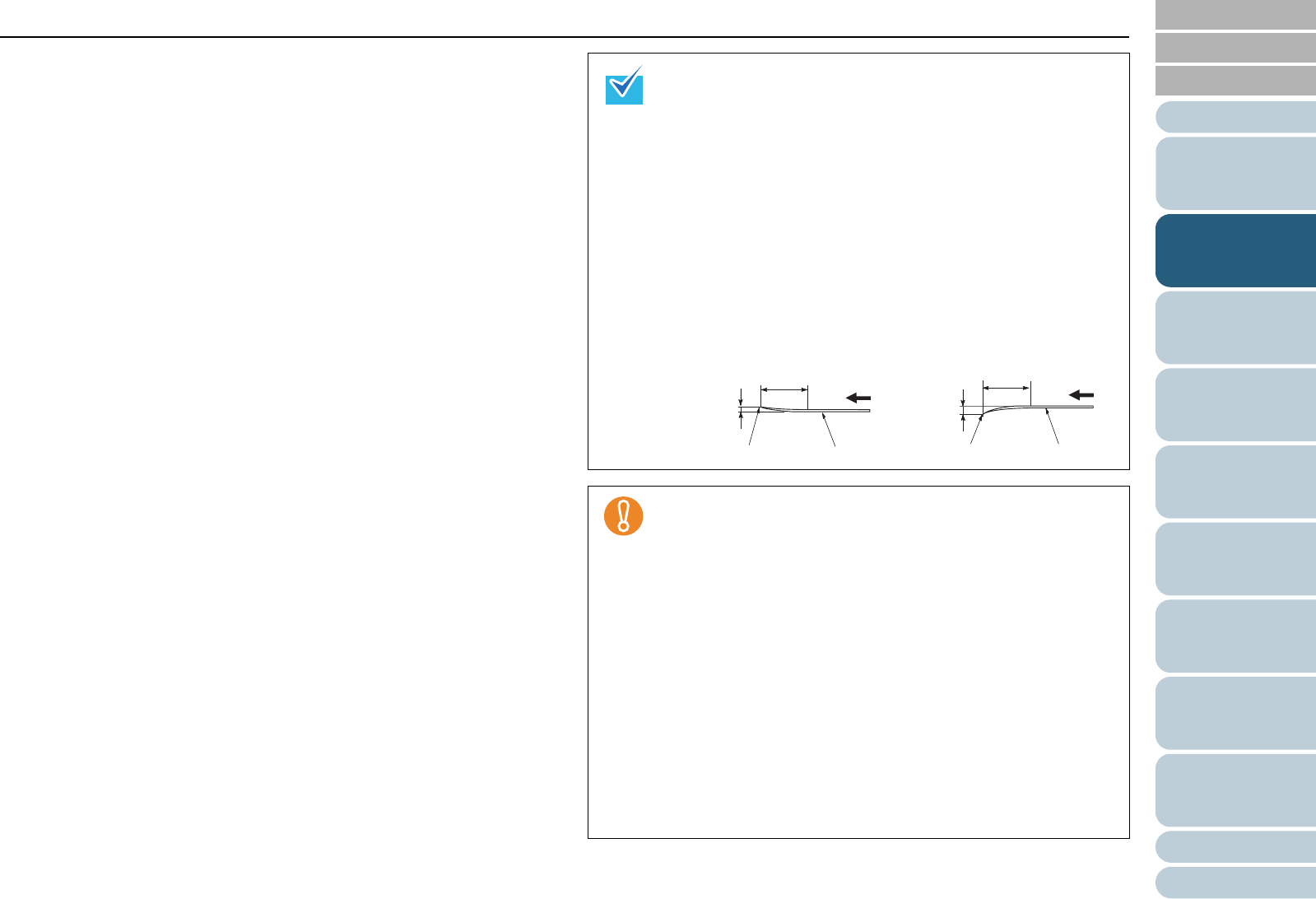
Introduction
Chapter 2 How to Load Documents
Appendix
Glossary
Index
Contents
TOP
41
Configuring
the Scan
Settings
How to Use
the Operator
Panel
Various Ways
to Scan
Daily Care
Troubleshooting
Operational
Settings
Replacing
Consumables
Scanner
Overview
How to Load
Documents
Precautions
The following types of documents may not be scanned successfully:
z Documents of non-uniform thickness (e.g. envelopes, documents with
photographs attached)
z Wrinkled or curled documents
z Folded or torn documents
z Tracing paper
z Coated paper
z Carbon paper
z Photosensitive paper
z Perforated documents
z Documents that are neither square nor rectangular
z Very thin documents
z Photographs (photographic paper)
Also, do not scan the following types of documents:
z Paper-clipped or stapled documents
z Documents on which the ink is still wet
z Documents smaller than A8 size
z Documents wider than 304.8 mm (12.0 in.)
z Documents other than paper such as fabric, metal foil and OHP film.
z Important documents such as certificates and cash vouchers which
must not be damaged
z To scan a document that is semi-transparent, increase the
brightness level to avoid bleed-through.
z To prevent the rollers from becoming dirty, avoid scanning
documents that contain large areas filled with pencil lead.
If you have to scan such documents, make sure to perform
cleaning frequently.
A message may appear when you scan a lot of documents
written with pencil. For more details, refer to "8.2 Error
Indications on Operator Panel" (page 145).
z If multifeeds, pick errors, or paper jams occur frequently,
refer to "1.9 Adjusting the Paper Separation Force" (page
26) for troubleshooting.
z All documents must be flat on the leading edge. Make sure
that curls on the leading edge of the documents are kept
within the following range:
z Since carbonless papers contain chemical substances
which may harm the rollers (e.g. pick roller), be aware of the
following risks:
Cleaning: If paper jams occur frequently, clean
each roller. For information on how to
clean the rollers, refer to "Chapter 6
Daily Care" (page 121).
Parts replacement: The life of each roller may end sooner
compared to scanning wood containing
papers.
z When scanning wood containing papers, the life of each
roller may end sooner compared to scanning wood-free
papers.
z Rollers may be damaged when a photo/sticky note on the
document contacts the rollers during scanning.
z The surface of the document may be damaged when
scanning gloss papers such as photographs.
More than 30 mm
Feeding direction
Less than
3 mm
Less than
5 mm
More than 30 mm
Feeding direction
(0.20 in.)
(0.12 in.)
(1.18 in.)
(1.18 in.)
Leading edgeLeading edge
Scanned side Scanned side


















